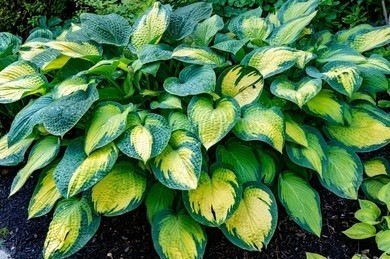Hosta Plant Tissue Culture
Hosta plants are perennial persistent herbs of the Liliaceae family, native to Asia, especially the majority of wild species in Japan. As many as 4,000 species of Hosta plants have been named in the world, and many new excellent species are cultivated every year.
Hosta plants are rich and diverse in plant shape and leaf color, flower color, and flower shape are also quite distinctive,
 The beautiful cascading leaves of the Hosta plant
The beautiful cascading leaves of the Hosta plant
Although we have a well-established tissue culture
platform, we are a team that is constantly improving
and evolving, so we also use newer methods that are better
suited to handle the needs of our customers' projects
plus shade-loving, cold-tolerant is a good flower and foliage herbaceous flowers. Because of its unique advantages in ornamental and adaptability, it has become one of the world's top-selling ornamental herbaceous flowers and is widely planted around the world, especially in the United States, Canada, and Europe, where it is the largest and most numerous.
Traditional breeding methods
- Introduction and selection
- Live selection
- Crossbreeding
- Ploidy breeding
- Radiation breeding
- Molecular breeding
Tissue culture service
Reproductive isolation does not exist between most Hosta plant species, and seed-propagated offspring often do not maintain their original genotypes. In addition, the genus has a long child age, taking more than three years from sowing to flowering, and is generally propagated without seeds. The division is the most common propagation method in nurseries, but the propagation speed is slow. How to restore the normal growth of dormant buds on the rootstock is the core problem to solve the division propagation.
The Hosta method of plant tissue culture fast propagation was created to meet the large demand for commercial production. Lifeasible has developed a complete set of techniques for rapid tissue culture propagation using flower buds, rootstock axillary buds, upper bracted flower stems, pedicels, and ovaries as explants.
We also offer the BA induction method, which significantly induces rapid germination of dormant axillary buds suppressed by apical dominance. Continuous spraying of BA will not cause damage to the plant and at the same time will promote the dormant This method will improve the ornamental appearance of Hosta in summer. The concentration of BA required to induce the maximum number of offspring varied among species.
You want to sign a confidentiality agreement.
You have a specific plant species for your experimental needs.
You have a reliable and relevant cooperation project to discuss.
You are very interested in our project or have any questions.
You need an updated and detailed quotation.
For research or industrial use.

 The beautiful cascading leaves of the Hosta plant
The beautiful cascading leaves of the Hosta plant
